One of the toughest and most daunting tasks for a general manager (GM) and any front office is to take a team that is a mess and turn it into a contender. It’s a particularly difficult assignment in the NHL where so many things need to go right for a team to rebuild successfully.
Related: Detroit Red Wings: What Is the “Yzerplan” Exactly?
In the past few seasons, a handful of teams managed to do just that. The Detroit Red Wings, Los Angeles Kings, New Jersey Devils, Philadelphia Flyers, and Vancouver Canucks are having great seasons and look poised to compete for the Stanley Cup.
It wasn’t long ago that all five were at the bottom of the standings, and despite taking different approaches to rebuild or even retool, they managed to build contending rosters. Here’s a look at what they did and how the blueprints they used can be used by other teams now and in the future.
Detroit Red Wings: Yzerman’s Moves Pay Off
A lot of experts will have to eat crow with their preseason predictions about the Red Wings. The Hockey Writers (THW) picked them to finish in seventh place in the Atlantic Division, as many believed their rebuild was behind schedule. The Buffalo Sabres were the hot pick to leap from rebuild to contention, and the Ottawa Senators were another Atlantic Division team expected to finish the season ahead of Detroit.
For a deeper dive into why the writers at THW didn’t believe in them, check out this preseason article.
Fast forward to the Christmas break, and the Red Wings are not only well ahead of the Sabres and Senators in the division, but they are among the top teams in the Eastern Conference. This season may be an outlier, but it looks like years of good decision-making, especially the recent offseason moves, have paid off. GM Steve Yzerman put together a strong core led by Dylan Larkin, Lucas Raymond, and Calder Trophy-winning defenseman Moritz Seider and then the big moves put the Red Wings over the top.
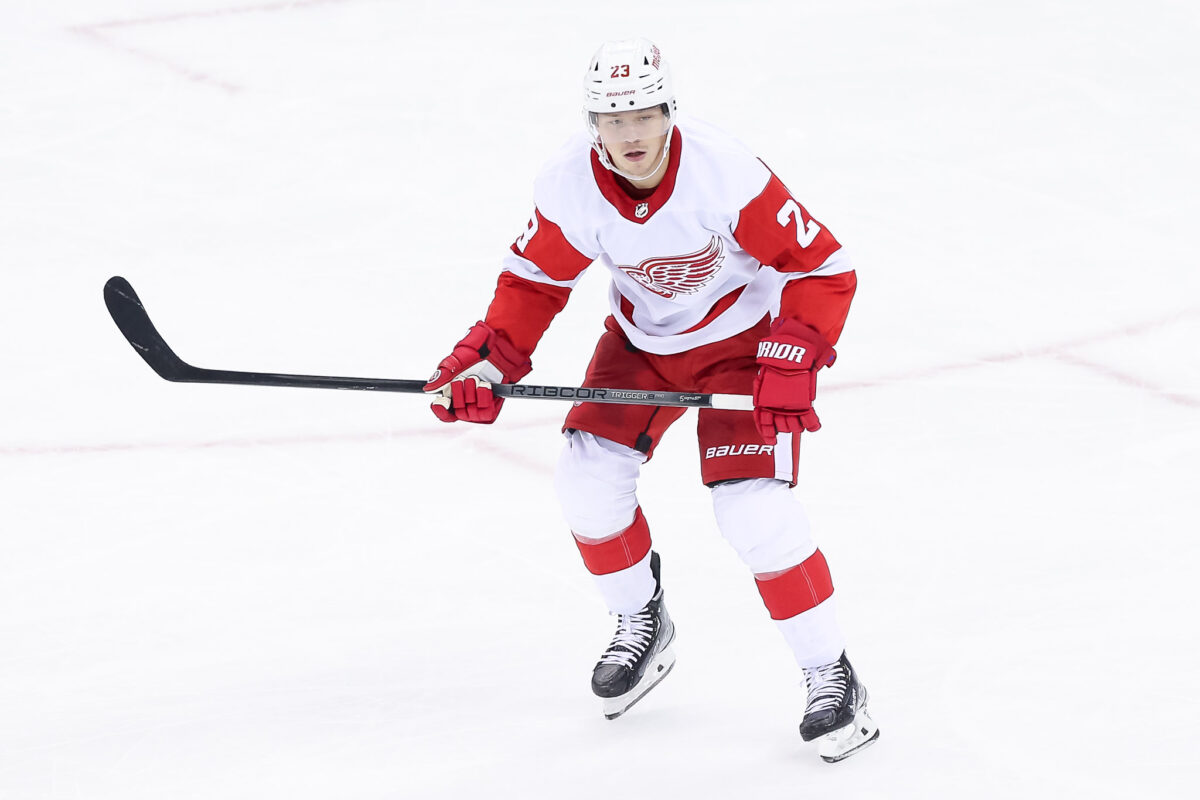
This offseason, the Red Wings saw an opportunity to acquire Alex DeBrincat, and they brought the star player back home in a blockbuster trade with the Senators. He not only strengthened the top six but added versatility to the lineup as he could both find the back of the net and provide scoring chances for the other skaters. DeBrincat was the final piece for a team that was only a few skaters away from contending.
Along with DeBrincat, the Red Wings added multiple players that have turned them into one of the teams to beat in the Eastern Conference. Shayne Gostisbehere signed a one-year deal, and he adds a two-way presence to the blue line to pair with Seider. Jeff Petry was acquired from the Montreal Canadiens to add depth on defense, and he’s helped prevent the unit from falling apart in the later pairings. Alex Lyon and James Reimer were both signed to solidify the goaltending, a position Yzerman has struggled with in the past, and they’ve added stability to the position. It’s rare for a team to nail most of their offseason moves, yet the Red Wings managed to do so, and it’s paying off right away.
The Red Wings were taking a longer and slower path to contention than other rebuilding teams. After one good offseason, Yzerman has put his team ahead of schedule, and they look like they will be competitive for years to come and possibly bring Hockeytown its 12th Stanley Cup title.
Los Angeles Kings: Building a Juggernaut One Piece At a Time
The Kings won the Stanley Cup title in 2012 and 2014, establishing themselves as one of the best teams of the 2010s. As the roster aged, the team started to decline, and a rebuild became an inevitability. Then they became a perennial bottom feeder in the Western Conference, finishing in sixth place or worse in the Pacific Division in three consecutive seasons before making the playoffs as a wild card in 2021-22. During those rough seasons, they started to rebuild from the ground up, notably with a few draft classes that allowed them to find starting-caliber players. Then came the moves that shifted expectations and made them one of the best teams in the conference.
The first big move was the Phillip Danualt signing in the 2021 offseason. At the time, it seemed like a risky one, considering they were adding a middle-six center on a six-year deal who was cashing in off a playoff run with the Canadiens. Danault was the two-way center the team needed, and his value to the forward unit helped turn the Kings into a playoff team the following season.
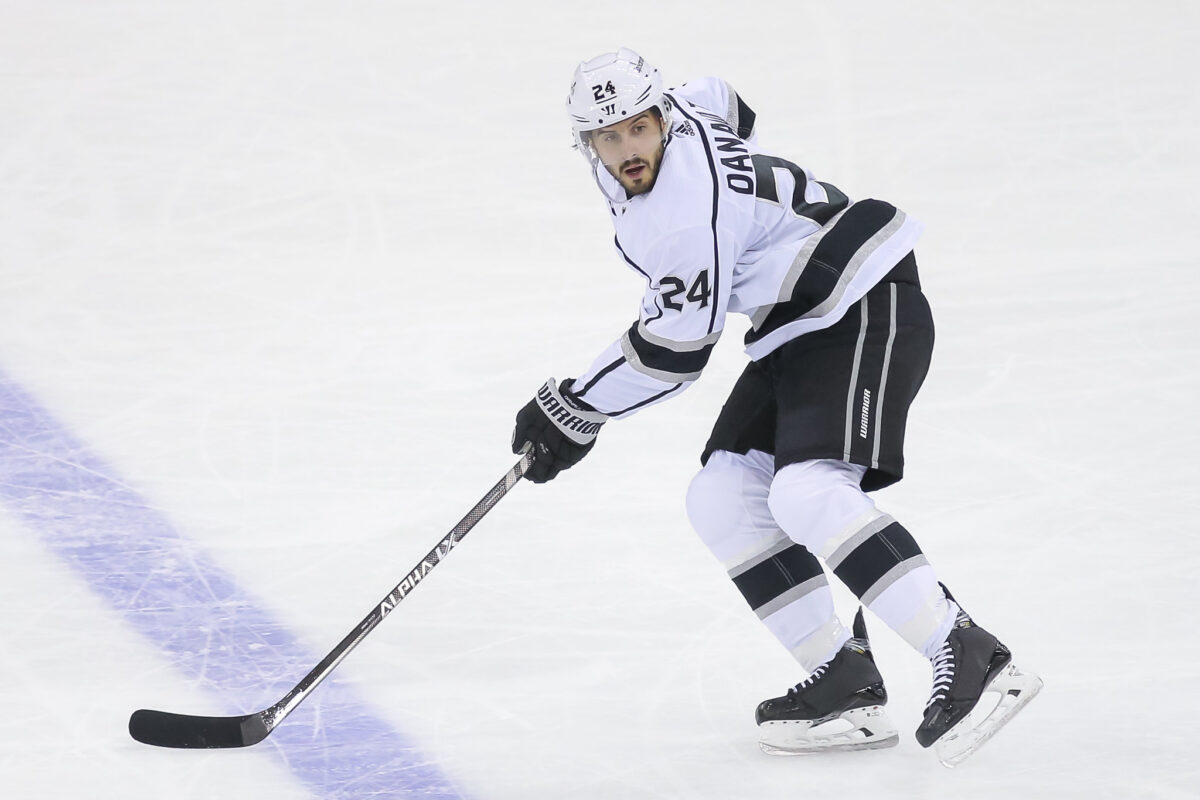
The next offseason, knowing they had a playoff-caliber roster, the Kings made their first splash. They acquired Kevin Fiala in a trade with the Minnesota Wild and signed the star winger to a seven-year extension. Fiala’s impact was immediate as he scored 23 goals and a team-leading 49 assists in the 2022-23 season to help turn the Kings’ forward unit into one of the best in the league, and the team once again made the playoffs.
The past two seasons ended with playoff exits in the First Round, and the hope is that their recent offseason addition was the final piece to put them over the top. They not only acquired top-six forward Pierre-Luc Dubois from the Winnipeg Jets but also extended him for eight seasons. Dubois has taken a great offense and forward unit to the next level, as the Kings are averaging 3.56 goals per game, which is fourth in the league. Along with the addition of an elite forward, the Kings also addressed goaltending, which was a mess in 2022-23, as they signed Cam Talbot in the offseason. Talbot has not only provided stability in the net but has rounded out the roster, as the team is allowing an average of 2.41 goals per game this season.
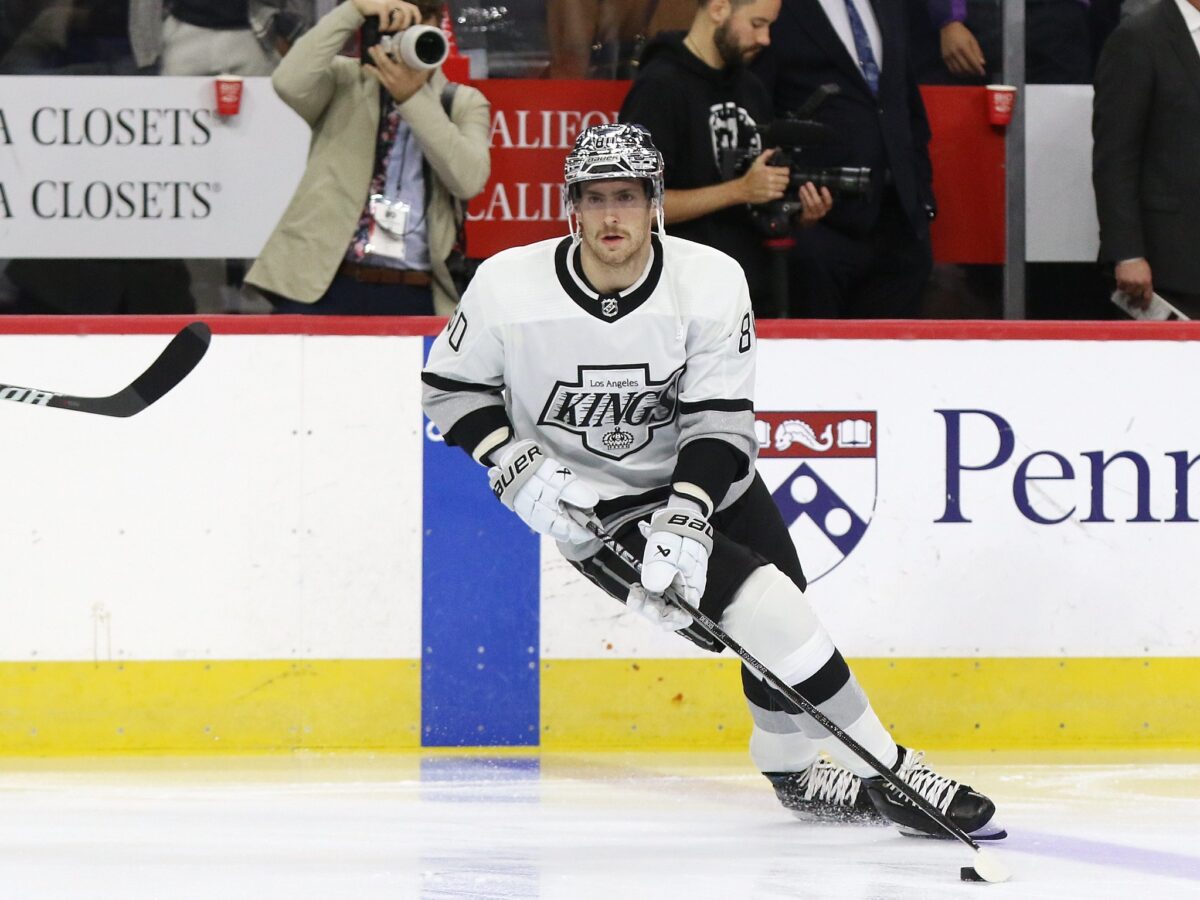
The Danualt singing in a vacuum isn’t a good one and probably doesn’t work out in the long run. The same can be said about the trades to acquire Fiala and Dubois, especially since the Kings gave up some of their top prospects to land both skaters. However, each move helped turn the Kings into an elite team, adding star power to a core that was starting to take shape.
New Jersey Devils: Draft & Then Methodically Go All-In
The Devils have become the model for a successful rebuild, and how could they not be? They went from a last-place team and a perennial cellar dweller for most of the 2010s to an Eastern Conference juggernaut. It starts with the draft, and they won the lottery twice, allowing them to select Nico Hischier and Jack Hughes with the first overall picks in the 2017 and 2019 NHL Entry Drafts. What happened next, however, is what separated the Devils from other teams that win the draft lottery but fail to do much afterward (case in point, the Sabres).
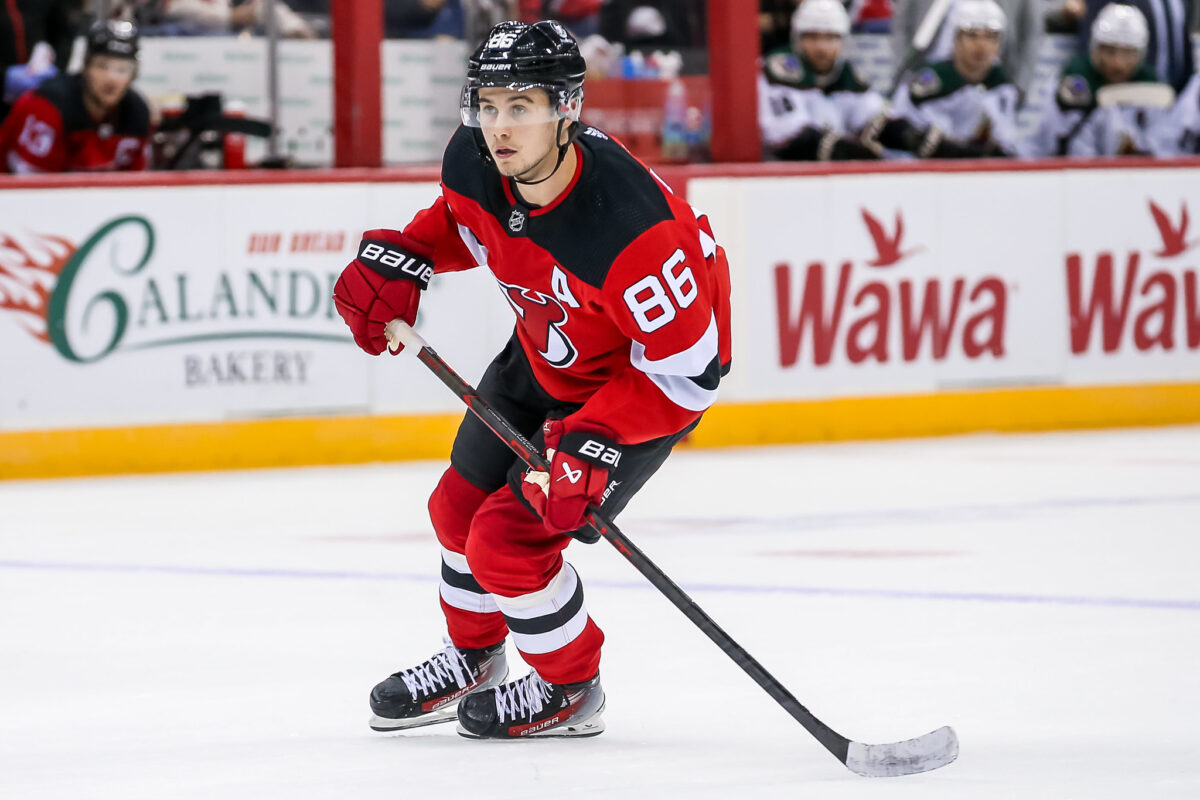
Hischier and Hughes were ready to play at the NHL level the moment they were drafted, and the decision to play them, even in the tough times, helped mold them into elite players. The other top prospects, however, needed more time to develop, and they weren’t rushed. By the start of the 2022-23 season, the Devils’ young core was not only ready but set up to succeed. Then came the offseason additions brought in to build around their young group and added much-needed complementary pieces to round out the roster.
In the 2021 offseason, the Devils made a splash by signing Dougie Hamilton, an elite two-way defenseman who could move the puck up the ice. Hamilton was also a veteran presence in a lineup filled with younger skaters, and he was the first of many veterans brought in in recent offseasons. Management signed Ondrej Palat and acquired Erik Haula in the 2022 offseason, bringing two experienced depth skaters to the forward unit to balance it out. The moves, paired with the decision to add Vitek Vanecek to solidify the goaltending, turned the Devils into contenders almost overnight, as they finished the 2022-23 season second in the Metropolitan Division with a 52-22-8 record.
Once GM Tom Fitzgerald knew the Devils were contenders, he started to buy in and make the roster a championship-caliber one. At the 2023 NHL trade deadline, he acquired Timo Meier from the San Jose Sharks, and in the 2023 offseason, he traded multiple pieces to land Tyler Toffoli. The Devils already had the players in place to compete, and the next task was making the moves that would put the team over the top.
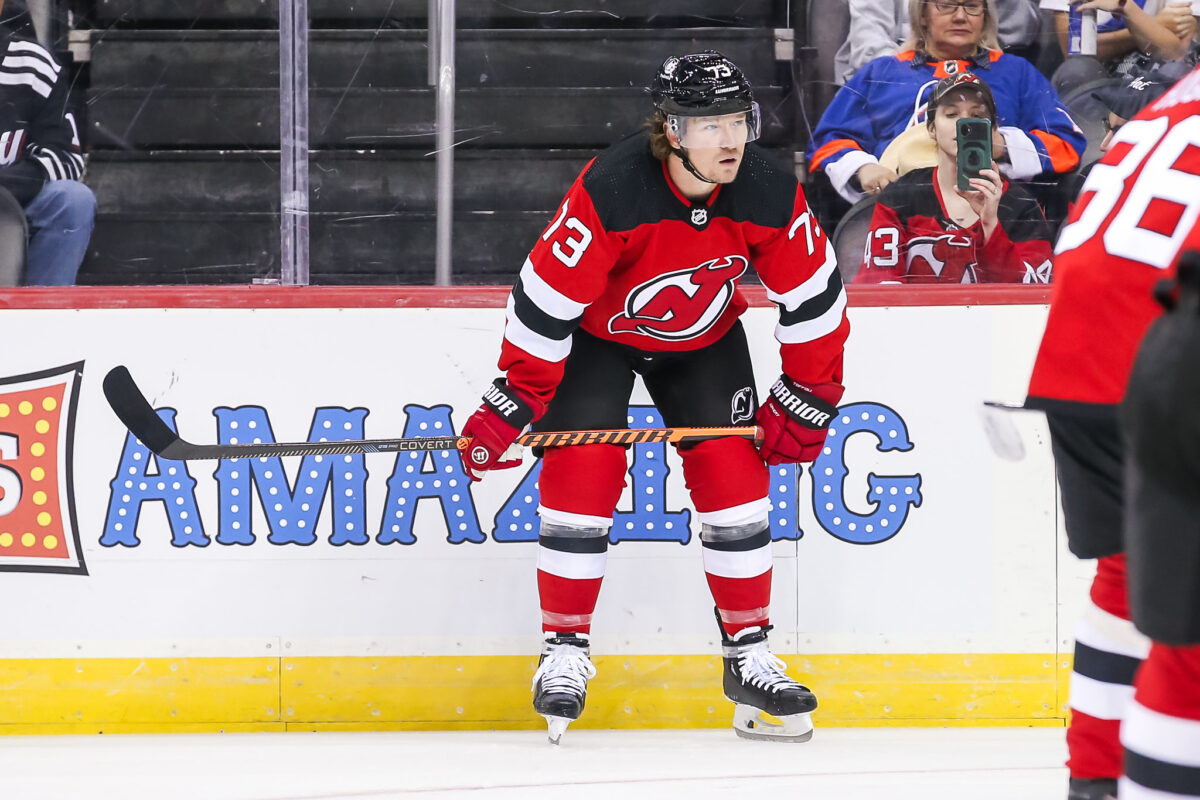
The Devils have stumbled out of the gate to begin this season, but they have one of the best rosters in the Eastern Conference, and if they make it to the playoffs, they will be the team nobody wants to face. While they didn’t build their roster through trades and free agency, they certainly took it to the next level with the moves they made. Hughes, Hischier, and Jesper Bratt are the key players to the Devils’ success, but they can only take the team so far. Fitzgerald knew that and, as a result, made sure to build around those young stars.
Philadelphia Flyers: Addition By Subtraction
A lot had to go right for the Flyers to become one of the surprises in the NHL this season – they entered the season as one of the rebuilding teams furthest from contention. They have the second-best record in the Metropolitan Division, and despite entering the season projected to finish near the bottom of the standings, they keep on winning.
Head coach John Tortorella has played a significant role in their rise, and GM Daniel Briere is starting to shape the roster into one that will be competitive on a nightly basis. There are plenty of minor details that are noticeable compared to last season, but this is what’s most impacted the Flyers.
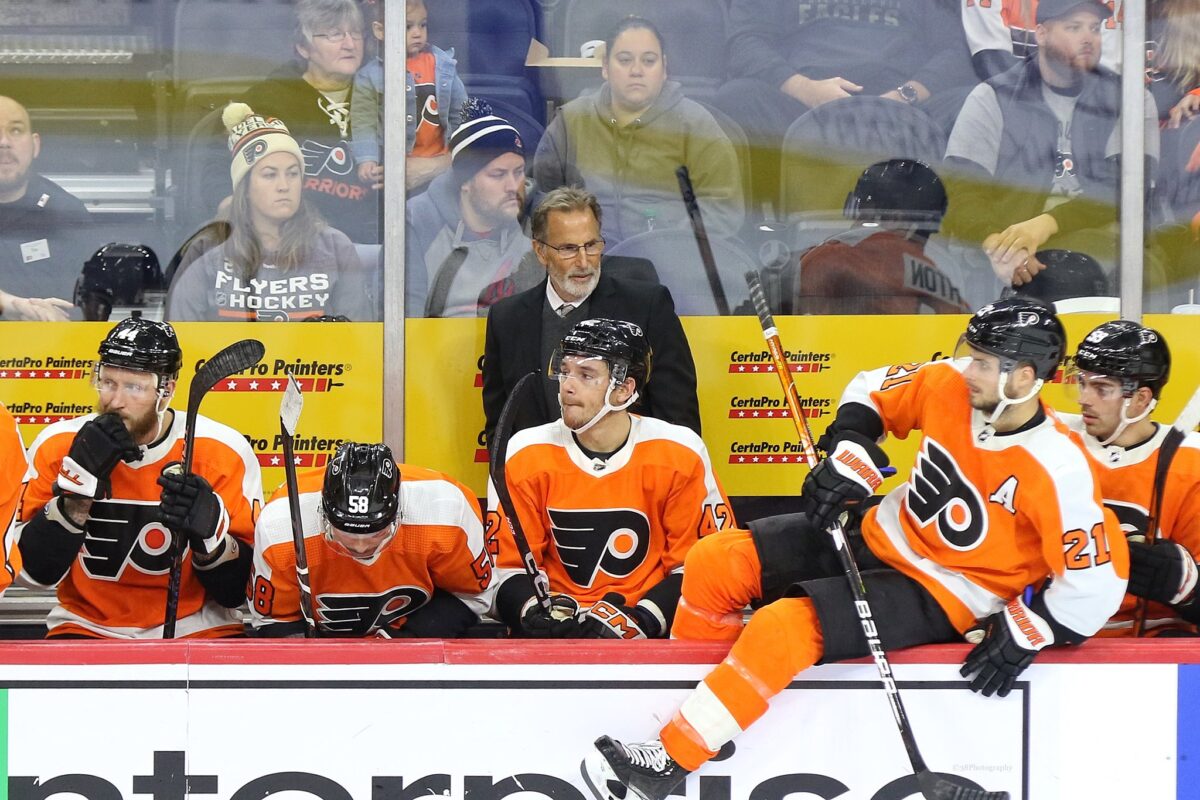
They traded away Ivan Provorov and Anthony DeAngelo this offseason, two veteran defensemen preventing Nick Seeler, Yegor Zamula, and Cameron York from playing bigger roles. Likewise, the Kevin Hayes trade both opened up salary cap space and allowed Bobby Brink and Tyson Foerster, two younger skaters, to thrive on the right wing. Every team wants to bring in players willing to “buy-in,” or they want “their guys,” and Briere and Tortorella have managed to find that with the roster they’ve assembled.
Sure, a lot of luck played into their success. The Metropolitan Division has been less competitive, with the Carolina Hurricanes, Devils, and Pittsburgh Penguins all underachieving. Sean Couturier is back in the lineup after battling injuries last season, giving the Flyers a top-six center and a reliable playmaker. Travis Sanhiem has established himself as a top two-way defenseman who can open up the offense from the point. Sean Walker, who was acquired in the Provorov trade, has become one of their best defensemen, and playing alongside Seeler, helped form one of the best defensive pairings in the league. On top of that, the penalty kill is one of the best in the NHL, killing off 85.57 percent of penalties.
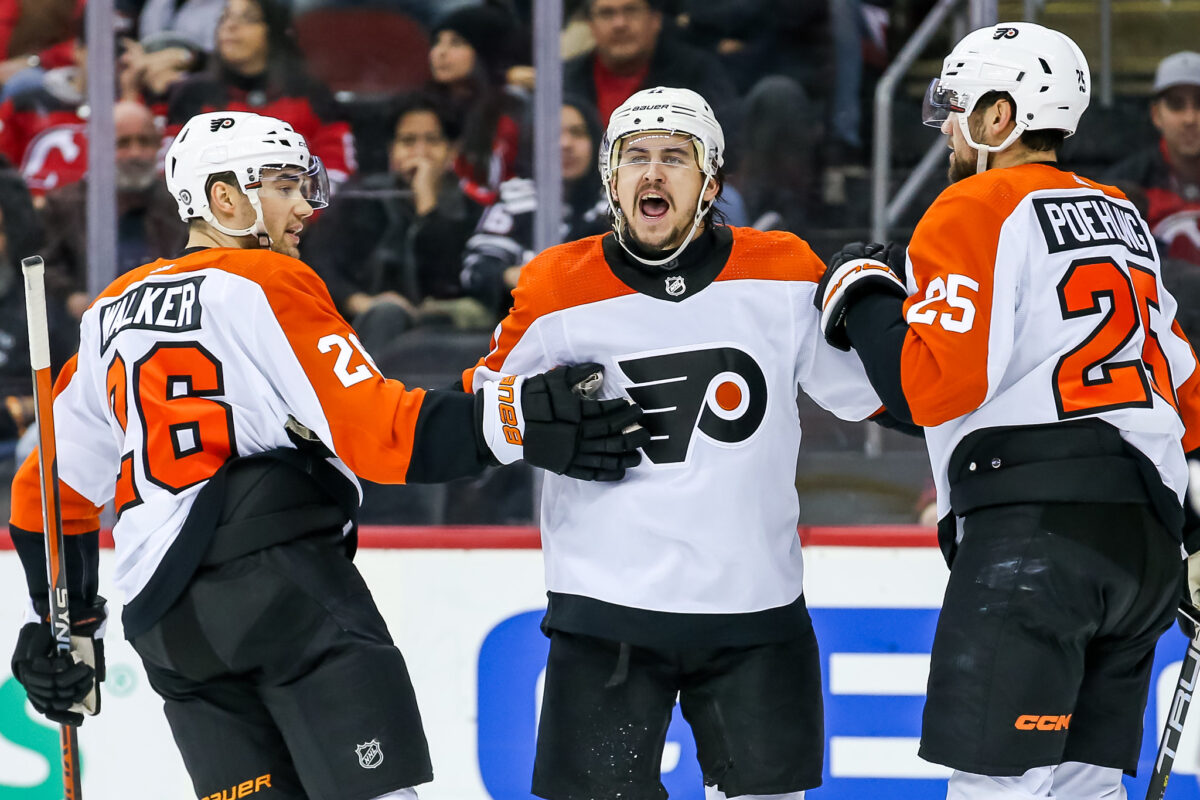
That said, the Flyers playing competitive hockey and remaining one of the top teams in the conference nearly halfway through the season is no coincidence, and it’s a reflection of a well-run team. They are similar to a lot of teams that have a successful restart from the top down. Specifically, they hire the right GM and head coach to immediately make a team competitive. The New York Islanders hired both Barry Trotz and GM Lou Lamoriello in the 2018 offseason, and the impact was immediate, with the team being instantly competitive without much turnover.
Briere started a roster teardown and, at the same time, has brought up players who are ready to compete and make an impact at the NHL level. Likewise, Tortorella, who has taken his fair share of criticism over the years, has brought out the best in this team. The Flyers are still in the early phases of their rebuild, but the turnaround is already starting to take effect. Better yet, their top two prospects, Cutter Gauthier and Matvei Michkov, are still developing, and when they join the team, they will take them to the next level.
Vancouver Canucks: Retooling On The Fly
Since 2014-15, the Canucks have only made the playoffs once and were stuck in no-mans land. They weren’t able to tear down the roster and, at the same time, could never make any viable moves to compete with the best teams in the Western Conference. Last season was a sign for the front office to finally start a rebuild, notably after they traded Bo Horvat during the All-Star Break.
Instead, they used the Horvat return to help retool and rebound this season. The Canucks already had a core led by Elias Pettersson, J.T. Miller, and Brock Boeser but were lacking depth and reliable skaters at key positions. They addressed those needs immediately, moving their 2023 first-round draft selection (acquired from the Islanders in the Horvat trade) to acquire defenseman Filip Hronek from the Red Wings. The move gave the defensive unit a steady top pair option to go along with Quinn Hughes, who was developing into a star.

Along with the Hronek addition, the Canucks moved Anthony Beauvillier this season, another piece in the Horvat trade, to the Chicago Blackhawks for a fifth-round pick and then used the pick to acquire defenseman Nikita Zadorov. The aggressive moves allowed them to turn a defense that was awful the previous season, allowing 3.61 goals per game, into one of the best in the league, allowing only 2.42 goals per game. In addition to addressing the defensive unit, the Canucks finally provided goaltender Thatcher Demko with a reliable backup by acquiring Casey DeSmith, and they also added depth to the middle six by acquiring Sam Lafferty.
The front office helped kickstart the turnaround, but it wouldn’t have been possible without Rick Tocchet behind the bench. Under the Canucks’ previous head coach, Bruce Boudreau, they were offensive-minded and played in high-scoring games but lacked discipline and defensive structure on the other end of the ice. Tocchet has balanced out the roster and made sure players are held accountable for mistakes, even scratched from the lineup if need be.
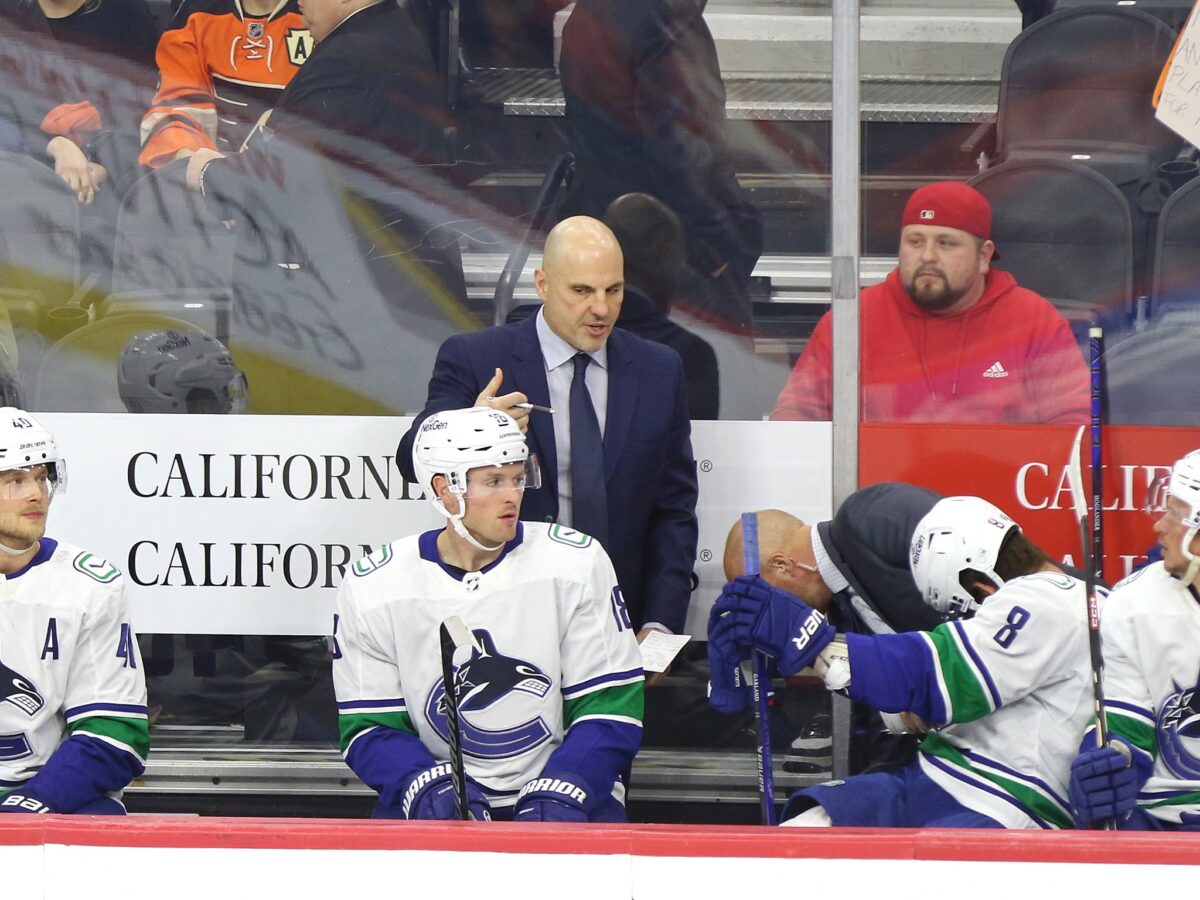
The Canucks have the second-best record in the Pacific Division and look like they have a team that can win the Stanley Cup, something the franchise has yet to do. The aggressive and active front office has helped, and on top of all the recent moves, the team is finally seeing the star players emerge as some of the best in the league.
Pettersson has always been a promising skater, but at 25 years old, he’s establishing himself as one of the best centers in the league. Hughes was always a great two-way defenseman, but the 24-year-old now looks like a Norris Trophy candidate. With a reliable defense in front of him, Demko looks like a top-of-the-league goaltender. The Canucks’ stars have played at another level, and from the top down, this team has drastically improved.
The Rebuilding Teams Can Find An Avenue To Contention
The great thing about NHL rebuilds is that there isn’t one path to contention. In other leagues, a team can draft its way to the top, and winning the lottery to select a generational talent often results in a team turnaround. There’s no guarantee that Connor Bedard can turn the Blackhawks into a contender, and if the team fails to build around him, there’s a chance his career will go to waste.
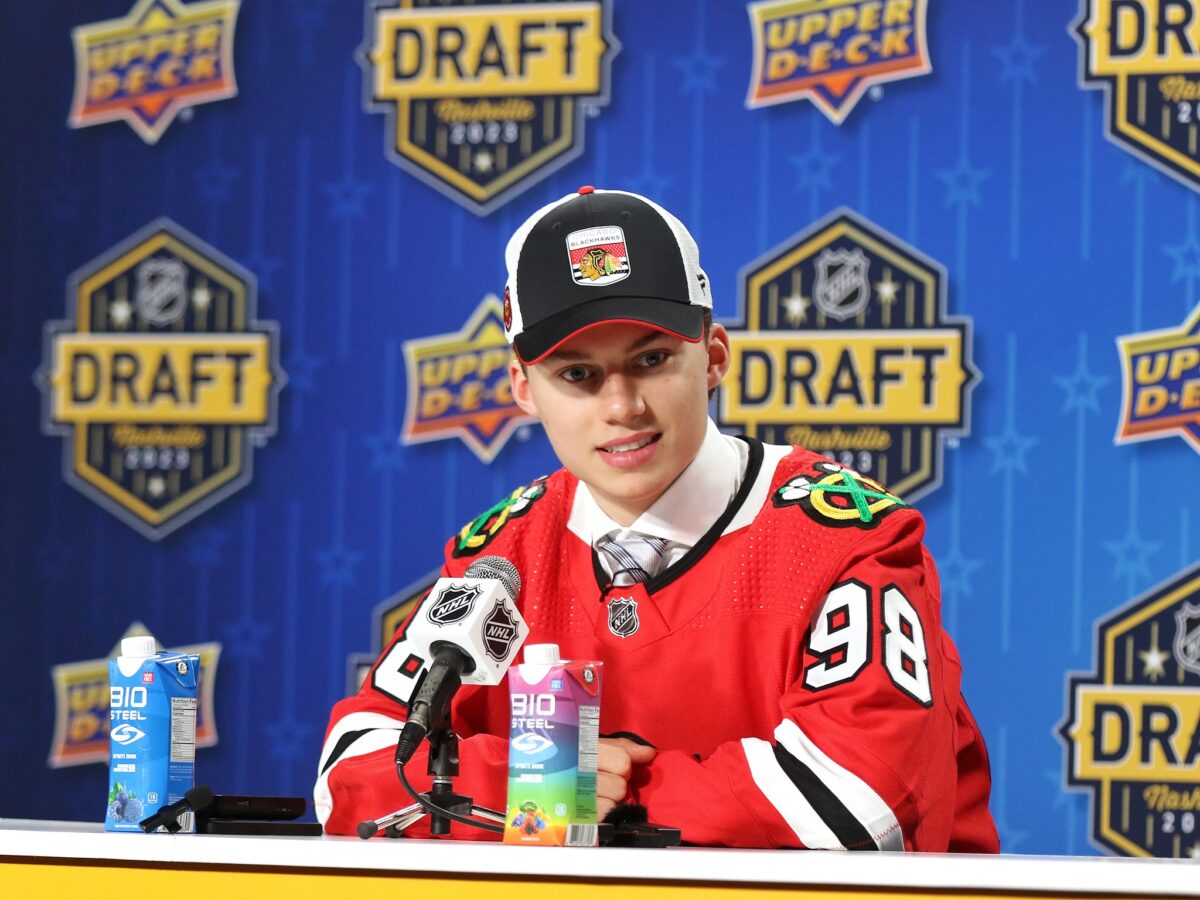
Drafting well helped, but the great teams also developed their prospects and built up their farm systems. In addition, once teams have their core in place, good ones find a way to build around them. Free agency deals are often frowned upon as they tend to age poorly, but the Kings, a team that has spent big in recent offseasons, are just one of the teams that have proved otherwise. Likewise, the Devils were aggressive in the offseason, but they never acquired a core piece, adding players to complement their stars instead.
It’s easy to look at the Anaheim Ducks, Columbus Blue Jackets, and San Jose Sharks as failed rebuilds, but as the Flyers and Red Wings have shown, the timeline can change with the right coaching staff or after a strong offseason. Likewise, the Calgary Flames, Pittsburgh Penguins, and St. Louis Blues, who recently fired head coach Craig Berube, are staring at inevitable rebuilds. However, the Canucks have proven that teams can retool with the right moves at the trade deadline or in the offseason.
Which team has had the most successful rebuild? Is there a successful rebuild you think provides a great blueprint for other teams to follow? Let us know in the comments below.
